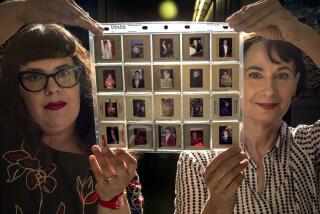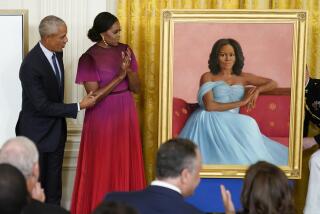A Historical Perspective on White House Images
- Share via
There are photographs of all but the first seven men to hold the office of President. But not until 1860 did photography helped a candidate get elected to the White House.
On Feb. 27, 1860, a little-known Illinois lawyer walked into Mathew Brady’s New York studio to have his portrait shot before he spoke at Cooper Union. Copies of that photograph of Abraham Lincoln were widely distributed on baseball card-sized boards; Lincoln later credited Brady and his Cooper Union speech with playing crucial roles in getting him elected to the presidency.
Franklin D. Roosevelt was the first President to keep a military photographer around to shore up his public image; staff photographers and photojournalists through the days of President John F. Kennedy kept the public in touch with the magic of the office.
George Tames, a New York Timesman and the 71-year-old dean of the White House photography corps, recalled taking pictures of the crippled Roosevelt after he had hoisted himself up by a crossbar installed in the back seat of his campaign car.
“Roosevelt knew the value photography had in perpetuating the (presidential) myth,” Tames said. “Every appearance was contrived to give the illusion that he could walk.”
Such a ruse held for Kennedy, too, Tames said, noting there were rarely pictures of the young President grimacing from back pain. Kennedy’s clever press aides gave exclusives to magazine photographers to spend a day with the President. They produced cozy portraits--the image of a demigod and his young family.
“The White House used us all by giving us breaks,” recalled Cornell Capra, director of the International Center of Photography. “They created a great amount of excitement, and some of us were dazzled from our ringside seat.”
More to Read
Get the L.A. Times Politics newsletter
Deeply reported insights into legislation, politics and policy from Sacramento, Washington and beyond. In your inbox twice per week.
You may occasionally receive promotional content from the Los Angeles Times.










